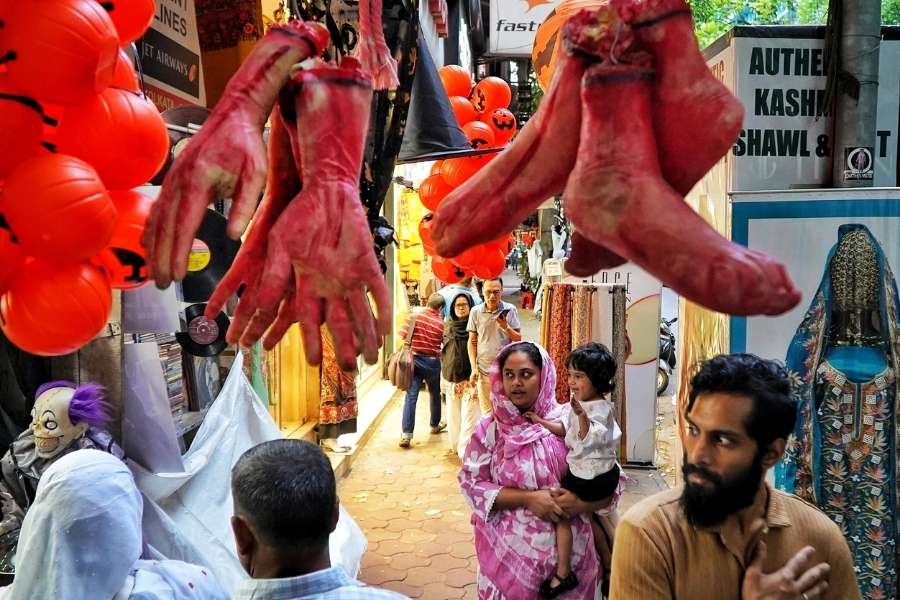 Thursday, 30 October 2025
Thursday, 30 October 2025
 Thursday, 30 October 2025
Thursday, 30 October 2025
“For three hours that morning I walked round the village looking for tracks and hoping, and at the same time dreading, to meet the tiger…” So begins one of the most thrilling passages in the Man-Eaters of Kumaon, where Jim Corbett recounts stalking the notorious Champawat tigress.
She had killed 436 people. But Corbett’s account was never of vengeance. It was an observation. To him, the tiger was, as he famously called it, “a large-hearted gentleman.”
150 years after his birth on July 25, 1875, Edward James Corbett still lives on as Carpet Sahib, the English man in khakis who spoke chaste Kumaoni and Garwali and lived like a local.
“He didn’t hunt for sport,” says 87-year-old Shivram Nautiyal, a retired forest guide from Ramnagar. “He waited for days. And only killed when there was no choice, he told The Telegraph Online.
Nautiyal’s father once accompanied Corbett during the hunt for the Rudraprayag man-eater, a leopard that terrorised pilgrims for nearly a decade. “My father said Corbett never allowed anger or fear to guide him. He used to talk to the forest like it was a person.”
Why ‘Carpet Sahib’? Locals struggled to pronounce “Corbett” and settled on the word that came closest to Carpet. It stuck, and now it is uttered with reverence.
“He wasn’t just a sahib,” smiles Nirmala Bhatt, 54, whose grandmother had fed Corbett during his village visits. “He sat on our charpoy, ate our food.... Which British sahib ever did that during those times?”
“There’s a rock by the stream where Corbett waited for three days to shoot the Chowgarh tigress,” says 52 year old Mohit Bisht, a trekking guide who now works with wildlife researchers. “We still show it to tourists. That stone is our memory keeper.”
But Bisht is quick to clarify that Corbett’s fame wasn’t only built on kills. “He knew man-eaters weren’t born. They were made”
That insight was radical in colonial India, where big game hunting was a trophy sport. Corbett, though, was different. He understood behaviour.
“He was more conservationist than hunter,it is wrong to call him a Shikari” says Bisht.
Not every tiger that attacked was a man-eater, Corbett believed. And not every kill was the end.
In his own words, “A tiger is a large-hearted gentleman with boundless courage, and when he is exterminated - as exterminated he will be unless public opinion rallies to his support - India will be the poorer by having lost the finest of her fauna.”
That empathy flows through his writings as well Man-Eaters of Kumaon (1944), The Man-Eating Leopard of Rudraprayag (1947), and Temple Tiger and More Man-Eaters of Kumaon (1954).
His books sold over four million copies and were translated into 27 languages. But cinema could never quite capture his nuance.
A 1948 Hollywood version of Man-Eaters of Kumaon flopped, despite featuring the famous Indian actor Sabu Dastagir .
In 1957, nine years after India gained Independence, the Hailey National Park...India’s first was renamed Jim Corbett National Park in his honour.
Corbett had long left India by then, having moved to Kenya with his sister Maggie. But he never stopped writing about India.
His last book, My India (1952), was not about shikar. It was about the people he loved...hill folk, forest guards, farmers. “To the many friends, the poor of India,” reads the dedication.
At last count, the Corbett Tiger Reserve today has over 250 tigers...the highest density in the world.
“Had Corbett lived, he would have been angry at the poachers and forest fires,” says Govind Rawat, a jeep owner in Ramnagar. Forest guides here are told to read Man-Eaters of Kumaon every year before the tourist season starts,” he said to The Telegraph Online. “It’s like a holy book”.







